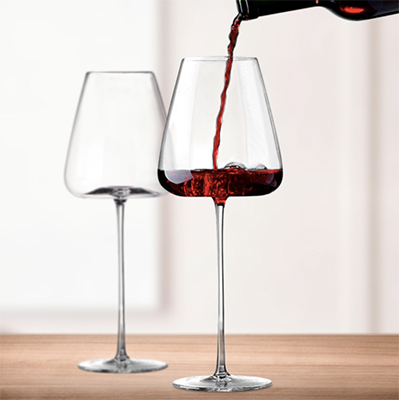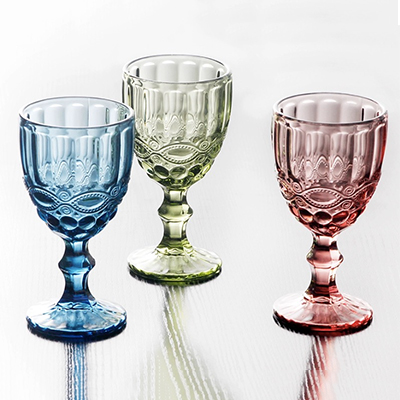handmade wine glass making process
2022-09-15
 1. For ingredients, according to the designed recipe list, weigh all kinds of raw materials and mix them evenly in a mixer. The main raw materials of glass are: quartz sand, limestone, feldspar, soda ash, boric acid, etc.
1. For ingredients, according to the designed recipe list, weigh all kinds of raw materials and mix them evenly in a mixer. The main raw materials of glass are: quartz sand, limestone, feldspar, soda ash, boric acid, etc.
2. Melting, heating the prepared raw materials at high temperature to form a uniform glass liquid without bubbles. This is a very complex physical and chemical reaction process. The melting of the glass takes place in a furnace. There are two main types of melting furnaces: one is the crucible kiln, where the frit is contained in the crucible and heated outside the crucible.
3. Forming is the transformation of molten glass into a solid product with a fixed shape. Forming must be carried out within a certain temperature range, which is a cooling process in which the glass first transforms from a viscous liquid state to a plastic state and then to a brittle solid state. Forming methods can be divided into two categories: handmade forming and mechanical forming:


A. Hand made one. and-
(1) Blowing, using a nickel-chromium alloy blowpipe, pick a group of glass and blow it while turning in the mold. Mainly used to form glass bubbles, bottles, balls, etc.
(2) Drawing, after blowing into small bubbles, another worker sticks it with the top plate, and the two people blow and pull mainly to make glass tubes or rods.
(3) Press, pick a ball of glass, cut it with scissors to make it fall into the die, and then press it with a punch. Mainly used to form cups, plates, etc.
(4) Freely form, after picking, use pliers, scissors, tweezers and other tools to directly make handicrafts.
B. Mechanical forming. Because of the high labor intensity, high temperature and poor conditions of handmade forming, most of them have been replaced by mechanical forming except free forming. In addition to pressing, blowing, and drawing, mechanical forming also includes—
(1) Calendering method, used to produce thick flat glass, patterned glass, wire glass, etc.
(2) Casting method to produce optical glass.
(4) Sintering method for the production of foam glass. It is to add a foaming agent to the glass powder and heat it in a covered metal mold. During the heating process, the glass forms many closed air bubbles, which is a very good thermal insulation and sound insulation material.
4. Annealing. Glass undergoes drastic temperature and shape changes during forming, which leave thermal stresses in the glass. This thermal stress reduces the strength and thermal stability of the glass article. If cooled directly, it is likely to rupture by itself during the cooling process or during subsequent storage, transportation and use.
(3) Centrifugal casting method is used to manufacture large-diameter glass tubes, utensils and large-capacity reaction pots. This involves pouring the glass melt into a high-speed rotating mold, and the centrifugal force makes the glass cling to the mold walls, and the rotation continues until the glass hardens.


Edit by Changsha Aikeyi Homeware Co.,Ltd
 1. For ingredients, according to the designed recipe list, weigh all kinds of raw materials and mix them evenly in a mixer. The main raw materials of glass are: quartz sand, limestone, feldspar, soda ash, boric acid, etc.
1. For ingredients, according to the designed recipe list, weigh all kinds of raw materials and mix them evenly in a mixer. The main raw materials of glass are: quartz sand, limestone, feldspar, soda ash, boric acid, etc.


